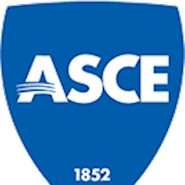
Brendan M. Harley, Sc.D., P.H., CEng., Dist.M.ASCE, a former MIT professor and co-founder of Resource Analysis Inc., has been honored with election by ASCE for its 2025 class of distinguished members for fostering the development of advanced hydrologic and hydrogeological modeling tools over the course of his 50-year career.
His career in academia included the development of the MIT Catchment Model, a digital method of simulating rainfall runoff from the land surface. Evolutions of this model are still in use today, as advanced problem-solving computer models. Harley was also a pioneer in early, leading-edge tools for project-oriented language-model input instructions and 3D/4D color graphics. He obtained his doctorate from the Massachusetts Institute of Technology in 1971.
He and three MIT colleagues later established RAI, where he served as President. After CDM Smith acquired RAI in 1978, with Harley as senior vice president, he helped establish it as the industry leader it is today. In addition to the continued expansion of surface water modeling tools, he led the development of the DYNSYSTEM of groundwater modeling codes which address all aspects of flow and transport in three-dimensional aquifer systems.
Harley put these advanced modeling approaches into practice when he spearheaded the development of urban water supply and quality control strategies for numerous major metropolitan areas throughout the United States, and several overseas countries, particularly Singapore.
During his 30-year support to the Singapore Public Utilities Board, he provided direction on state-of-the-art policy, planning, and engineering projects for advancing Singapore’s water independence. The most notable highlight of Harley’s career was his leadership in the planning, design, and construction of Singapore’s iconic Marina Barrage. This project impounds the flow from five river systems draining 1/7 of Singapore’s land area including the intensely developed older city. It is effectively the final link in flood protection of the city core, which is predominantly low lying and flood prone under storm conditions and high tides. Harley led in the development of the barrage from concept into a multi-purpose scheme including flood management capacity, water supply from a resulting in-city reservoir, and urban enhancement of the downtown area facilitated by the stable water levels maintained by the system.
In his other work, Harley was a technical leader on various projects focused on sustainable development and protection of coastal area groundwater supplies with complex freshwater-saltwater interfaces. The sole source groundwater supply for Long Island, New York is an example. Here the evaluations conducted under his direction included addressing saltwater intrusion and the impact of changes in pumping and climate change on groundwater levels and developing sustainable water supplies for over 3 million people.
Finally, Harley has been a leader and mentor to generations of young engineers and scientists through his highly effective hands-on guidance and mentoring.



